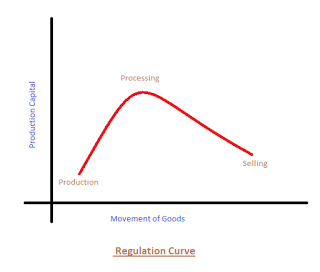Trickle Down Regulation
There have been several theories regarding the nature of an economy and how it should be managed and controlled . From free market ideology to communism , there has always been different approaches to market regulation or deregulation . Here, we discuss another new approach to the market regulation process . This process may be applied in several markets and may also have been included in several other theories .
The Trickle down regulation refers to somewhat opposite of the trickle down approach to economics that has been famous in america and other parts of the world . This is a regulatory approach rather a massive deregulation . In the conventional trickle down economics , the top bussiness and high value market assets are given benefits such tax cuts, less government regulation standards which many trickle down to its employers and those in the lower tax brackets but history has proven it to be wrong . From the economic data from the past 15-20 years, we can see how trickle down economics has been a massive burden to the economy and how it has only benefited the rich and powerful and thrown the middle and lower middle class under the bus .
This simple regulatory theory can be explained by a simple graph :
This graph gives us a simple path through goods are moved . The starting of the curve is through the production line up and then processing and finally to the consumers through various outlets . Lets take an example of a fish farm which produces fishes and sells them to the processing factory or a middle man for his fish to sell . In terms of the capital , the processing unit/factory spends the most money on the fish followed by the production unit and the selling unit.From the curve , which is shaped like a mountain , the top point represents the highest capital asset as the processing unit and two lower asset units and production and selling units .
Now , the main thing this theory has to say is to highly regulate the top value asset - processing unit and put minor regulations for the lower value assets which balances the overall nature of the curve and hence helps produce quality goods without very high economic burden.
For example, for the same fish cycle , when the fish processing plant has regulations to follow such as good quality fish then the production unit has to supply the standard fish and in turn the processing unit also supply's the selling unit good , quality fish . This can be applied not only for quality of product but also economic benefits and overall profit for all three units . This is a simple theory and I will continue posting more extensive versions of the regulation curve for different economic environments .
Hope You Liked My Post
Image Credits :- Google

